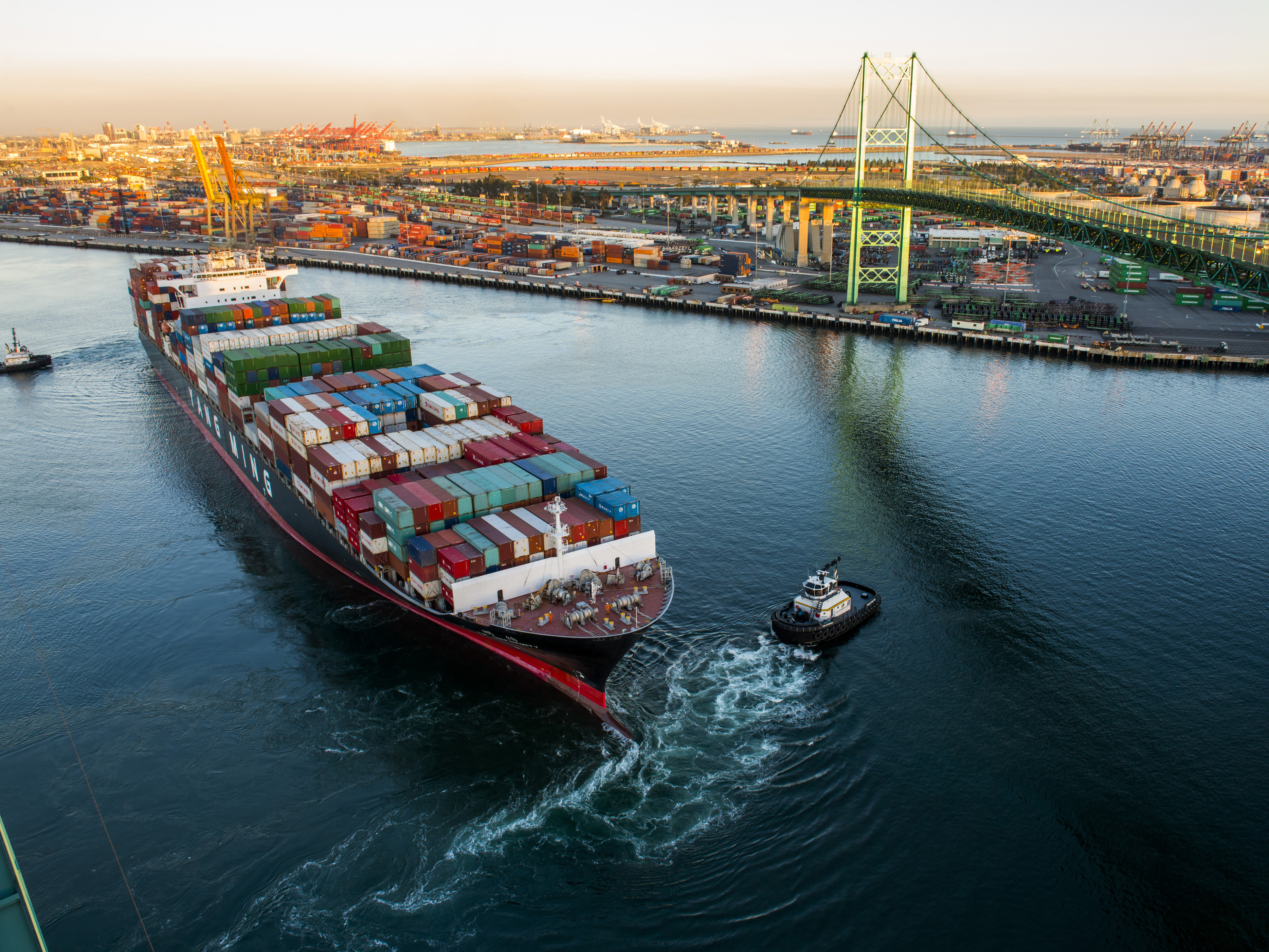
In the midst of the worst global supply chain crisis in recent memory, some businesses are finding creative ways to get around severe congestion at seaports and inland freight terminals.
Take Ricoma. The manufacturer of embroidery machines found that its recent opening of a new warehouse in California paid off as an alternative to its existing port of entry in Miami, and helped to keep product flowing to market.
Ricoma was born in 1998 as seller of sewing machines. It transitioned into the embroidery sector around 2007, when it began building machines in China for distribution throughout the world. Chief executive officer Henry Ma subsequently launched a sister company called Garmeo, a platform for customizing embroidery decorations for apparel brands. In an example of creative cross-marketing, orders placed on Garmeo can be routed for production to individuals equipped with Ricoma machines.
Ricoma employs a workforce of around 300 at its own factory in Shenzhen, where more than 80% of its products are sourced. That arrangement exposes the company to a certain amount of risk in the event of a disruption in the flow of goods from China. Like many other U.S. businesses relying on production in that country, Ricoma has recently found itself subject to severe shortages of containers, as well as ocean carriers willing to move its freight on schedule (or at all).
Ma describes the problem that Ricoma faced around the third quarter of last year as twofold. First, it suffered when factory production in China temporarily shut down as a result of the COVID-19 pandemic. “During that time,” he recalls, “we were still selling a lot of machines, but we could not produce enough to fill demand.”
Along with the reopening of Chinese factories in the fourth quarter came a drastic increase in the volume of container shipments out of Asia. Suddenly, Ricoma and many other shippers were unable to obtain enough containers to carry their products to North America and other points around the world. And when the company did manage to book slots on ships, the price was up to three times higher than previous levels.
For Ricoma, the dual dilemma resulted in what Ma describes as an “epiphany.” “It was a crisis,” he recalls, “but at the same time a great opportunity. My philosophy at the time was that if we could get the supply chain issue figured out, we could win a lot of customers simply because we had inventory.”
Easier said than done, of course, but that was a crucial realization for Ricoma. It stood to lose potential customers who didn’t want to wait three months to get a machine, and would happily switch to another manufacturer that could provide it faster. So Ma set out to ensure that his supply lines remained open and steady.
He was determined to obtain the necessary containers and sailings at whatever price he had to pay, even if that cut sharply into his profit. “I’d rather gain customers and market share in the long run and make less in the short run,” he says. Ricoma’s strong cash position at the time allowed it some room to maneuver on cost.
The second advantage that the company possessed was a matter of luck and timing. At the moment that supply chains from Asia began clogging up, Ricoma was closing on a new warehouse in the Southern California city of Rancho Cucamonga, to which it began diverting some shipments originally intended for Miami. That move gave it two options for distributing throughout the U.S.
In deciding to route some shipments through Southern California ports, Ma ran smack into the heavy congestion that has plagued marine terminals in that area for months. But the delays were no worse than the extra 15 days it previously took to send containers through the Panama Canal and into the Port of Miami, so schedules pretty much balanced out. In any case, says Ma, “I was just focused on getting anything onshore.”
Getting its hands on the requisite number of ocean containers remains a problem, forcing Ricoma to prioritize those products with the best return and in greatest demand. Currently the company is moving approximately 75% of its containers from Asia through Southern California, given that equipment and slots to Miami “are still few fewer and more expensive,” Ma says. Because Ricoma maintains a smaller staff in California than in Miami, the switch hasn’t been easy to achieve. “It’s a struggle from an operations standpoint to fulfill enough orders,” he says.
As port congestion and other supply chain issues begin to abate, Ricoma is likely to seek a 50-50 split of incoming containers between Southern California and Miami. In any case, the second warehouse is permanent. While it wasn’t constructed with the pandemic in mind, it has served as an important pressure valve for a supply pipeline that was vulnerable to disruption in times of interrupted or unusually high demand.
“It was great timing, that we were able to get that warehouse secured right as supply chain issues started to blow up,” notes May. “That was salvation for us.”







